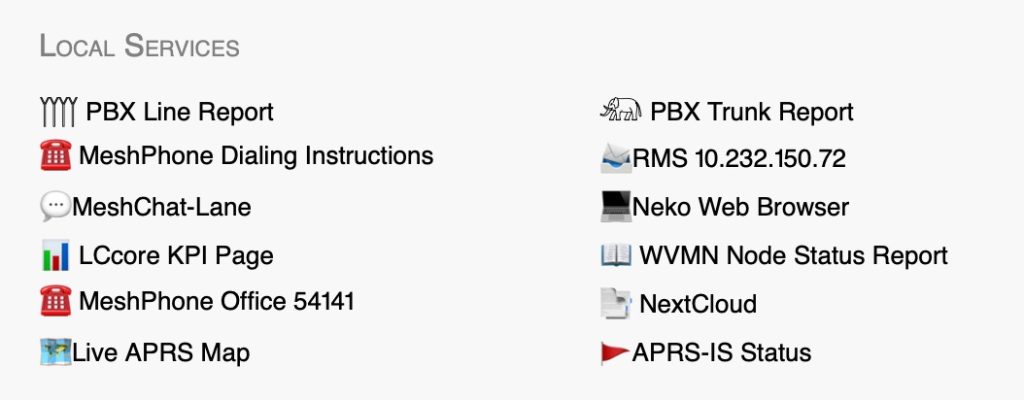The City of Palo Alto has requested that we design the network to support operation by emergency services workers who may not be amateur radio operators. The City observes that for every one ESV who is an amateur radio operator, there are five or ten who are not. This is a tall order and takes us immediately out of the realm of typical AREDN which is a network built by hams and operated by hams.
An amateur radio network brings both the benefits and strictures of having to operate under Part 97 of the FCC Rules and Regulations. One of the biggest benefits, and one that is used widely by AREDN operators around the world, is the ability to operate at power levels far above those available under so-called Unlicensed National Information Infrastructure (U-NII) rules. In AREDN networks, 5 GHz is used most often because the equipment is widely available at modest cost, and antenna sizes are relatively modest compared to lower frequencies. It is staggering to realize that the same piece of equipment when operated under AREDN or under U-NII can differ in their legal power levels by a factor of 125 or more. This gives amateur radio operators great advantages in being able to overcome signal attenuation by foliage, operate with greater distances between nodes, maintain fewer nodes with wider antenna beams that are less fiddly to aim, and other related benefits.
One of the most restrictive matters that amateur radio operation takes on is spelled out in 47 CFR § 97.113 entitled Prohibited Transmissions. While I am no lawyer, I can report that much has been debated about the prohibition against "messages encoded for the purpose of obscuring their meaning". For data communications, the most immediately apparent case is the use of Transport Layer Security (TLS), which is the basis for the https protocol we all use so widely. TLS was designed specifically to obscure the meaning of the data so as to prevent eavesdropping (e.g., hiding passwords, credit card numbers and other sensitive data). By my reading, TLS and https when used on Part 97 wireless links run afoul of § 97.113. Some have argued that § 97.113 is a should-not instead of a may-not. That's plain false. 97.113 clearly says, in its title, "Prohibited". The party at risk is the amateur radio license holder whose callsign is embedded in the data stream -- the trustee of the AREDN node. It is that person's responsibility to make sure the wireless transmissions from his/her node is compliant with Part 97.
Traffic specifics: AREDN vs. non-AREDN
AREDN networks are intended to enable access by hams to network services that run directly on the AREDN network. AREDN is not, and cannot be, a general-purpose internet service provider. As such, the typical traffic includes email between on-AREDN email servers, file retrieval from on-network repositories, access to ham-operated webcams, access to ham-operated weather stations, on-network chat services, on-network website, on-network wikis, on-network mapping, on-network voice-over-IP (voice) telephony, and access to on-network video streams. Here are the services offered by one AREDN node that I just captured, illustrating the point:

All of these are consistent with the objective of providing resilient local services to the community served by this AREDN node. None of these can use https. Overall, this is dramatically different than one's daily diet of GMail, Facebook, Instagram, X (formerly Twitter -- had to say that), banking sites, Fandango, Apple, Toyota,... the list goes on. AREDN traffic is inherently off-the-normal-internet-grid.
An interesting note about map-based apps: we've all gotten used to mapping apps on our phones. Are you aware that these apps need constant access to cloud servers on the internet for map data? Saving all the different map scales from zoomed-in to zoomed-out on your phone represents a significant amount of storage space -- 10-20 GB for a city. Instead, app developers rely on fetching so-called map tiles from servers when needed, Some tiles at some zoom levels may be cached on your phone for a time. But when the internet is out, apps won't be able to access their tile servers and the maps will stop working. Our own on-AREDN map is backed by our own on-AREDN map tile server that does not require internet access.